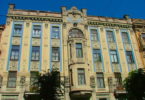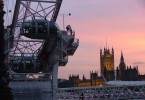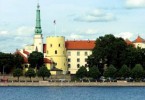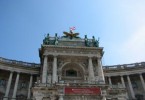With so much of it about, most Dubliners wear their city’s history lightly in an environment where the past lives with the present in ancient monuments, historic buildings, gracious squares and fine old urban style that still manages to be gloriously alive. This if anything is emphasised by the city’s modern architecture, seen particularly in the area around the International Financial Services Centre north of the river, and across the Liffey on George’s Quay.
Further impressive development has taken shape along both sides of the Liffey towards the Bay while the Port itself is busier than ever to add a touch of reality to the waterside glass towers.
The city and Ireland’s spirit is also expressed in the Gaelic Athletic Association’s impressive headquarters stadium at Croke Park which can accommodate over 80,000 spectators for several sports, while the legendary Lansdowne Road rugby stadium south of the river has been completely re-built as a 50,000 seater.
But where the residents saw some inconvenience in the river, the Vikings sensed an opportunity. When they brought their longships up the River Liffey around 837AD having first raided at nearby Lambay in 795, they knew of a sheltered berth in a place which the locals of the hurdle ford called Dubh Linn – “the black pool”. The Vikings settled along Wood Quay and around Dublin Castle.






